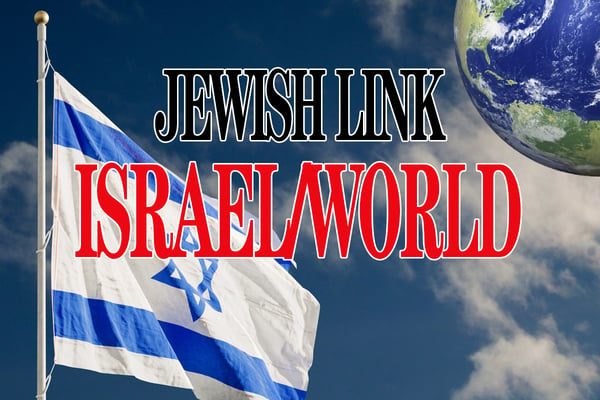
Communities in Israel that sit near the Gaza envelope have been devastated in ways that continue to have a ripple effect on their residents.
Although it didn’t suffer the physical damage or casualties of other kibbutzim that were invaded by Hamas on Oct. 7, 2023, the evacuations, abandonment and psychological stress from that day have taken their toll on Kibbutz Gvar’am’s 670 residents, 40% of whom are 18 and under.
“The “unseen trauma” experienced by its youth has resulted in many of them turning to drugs and alcohol to help cope, and they are now in desperate need of psychological treatment and support.
Last year the Jewish Federation in the Heart of New Jersey (Federation) reached out to Communities2Gether, a national initiative of the Jewish Agency for Israel and Jewish Federations of North America, designed to foster direct support and collaboration between U.S. communities and the Israeli communal towns that suffered the greatest losses on Oct. 7.

However, Federation Director of Community Relations and Israel Engagement Dan Rozett said it decided to go in a slightly different direction and use its money to help a community getting little attention to its needs. That direction led Federation to Gvar’am.
“The IDF stopped the attack about a mile from this kibbutz,” said Rozett. “This kibbutz had never been really targeted by rockets from Gaza over two decades so they didn’t have the means or ability to deal with this new unprecedented threat. There were no evacuation plans, they weren’t in touch with the IDF like other communities, there was no familiarity with running to bomb shelters.”
The kibbutz had been celebrating “children’s day” for Simchat Torah the evening before, with its residents sleeping in tents on the central lawn, when they were awakened by sirens and loud explosions. Terrorized and afraid to run back to their homes, they took shelter in outside bomb shelters and nearby buildings, remaining for hours while receiving messages from nearby communities warning of possible infiltration by terrorists, while awaiting guidance and support from the IDF.
As evening approached, kibbutz leaders decided to self-evacuate and split into 12 groups, with each choosing their own routes and destinations, becoming disconnected from each other.
“Other kibbutzim were evacuated together by the government and stayed together,” said Rozett, but Gvar’am residents found themselves scattered in various locales while local security personnel secured the kibbutz. Most did not return until February or March.
This took an “overwhelming” psychological toll on everyone, particularly the youth, who, he noted, attended a regional school and knew many of the teens murdered on Oct. 7.

“The kids from Gvar’am started turning to drugs and alcohol and stopped going to teen programs,” said Rozett. “They had no faith in adults and they rebelled. Some refused to go to the IDF. They fell into a depression.”
Because this kibbutz wasn’t physically affected he was told by kibbutz members that they felt abandoned by the Israeli government. They compared their situation to someone who witnessed or experienced tragedy, but were left physically unharmed so were ignored.
Federation is funding informal educational and resilience programs, and hiring psychologists to provide trauma counseling and financial assistance to aid in Gvar’am’s recovery.
“The categories focus on children and youth,” said Rozett, including helping teachers—who have also experienced trauma—in getting the tools needed through pedagogical counseling to help their students. “We are calling it strong leadership in education.”
Resilience training involves group activities aimed at children and teens to help rebuild a sense of trust as well as a feeling of belonging through peer bonding. It will also include trips outside the kibbutz to relieve daily stress and strengthen friendships, and creative pursuits such as woodworking or photography.
But, even with all that support it is knowing another Jewish community is there for them that seems to have meant the most to Gvar’am and Federation wants to build on that by establishing “a living bridge” across oceans and time zones connecting the people of greater Middlesex and Monmouth counties with the kibbutz.
Even before programming was established, Federation and Gvar’am residents had a shared menorah-lighting on Chanukah. More recently, a joint cheesecake-tasting contest was held around Shavuot where the two groups exchanged recipes and voted for the best cake.
Federation is also planning a mission to Israel next year and will make Gvar’am one of its stops as part of its future goal of establishing a sister city relationship with the kibbutz. As a bonus, kibbutz leaders said once they get back on their feet, Gvar’am would like to assist residents of neighboring communities who have nowhere to go, since its infrastructure is intact. Federation has also pledged its continued support to aid in that effort.
“The people component was the first thing the leaders of the kibbutz mentioned,” said Rozett. “They said the financial support was amazing, but for lack of another phrase they just wanted a virtual hug from another community outside Israel. It was hard to hear but it made us realize how important it was to them and how much they are suffering from unseen trauma.”
If interested in going on the mission, contact Rozett at (732) 588-1800 or danr@jewishheartnj.org.
Debra Rubin has had a long career in journalism writing for secular weekly and daily newspapers and Jewish publications. She most recently served as Middlesex/Monmouth bureau chief for the New Jersey Jewish News. She also worked with the media at several nonprofits, including serving as assistant public relations director of HIAS and assistant director of media relations at Yeshiva University. She can be reached at debrarubin1@gmail.com









